#no. its time for the scottish gaelic version
Text
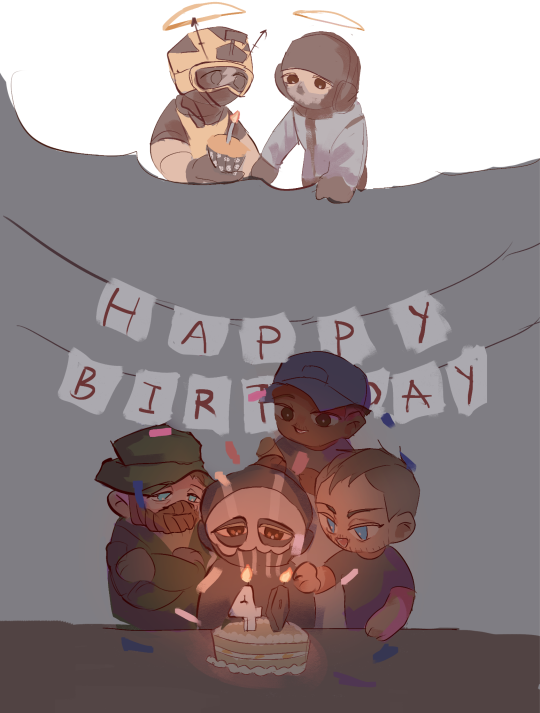
happy birthday simon ghost riley
all the joy and love for you, simon
#call of duty#gary roach sanderson#ghost cod#simon ghost riley#cod roach#john soap mactavish#cod#cod soap#cod gaz#kyle gaz garrick#john price#cod john price#my art#its mango cake for 22ghost#tf141 uses their knowledge of language here#singing all variants of the happy birthday song for simon#you think its the end?#no. its time for the scottish gaelic version#they butcher the pronounciation (except soap) but its alright#their love for simon is being transmitted#happy birthday ghost
3K notes
·
View notes
Text
Macbeth Q&A 18th Jan 2024 Part 2
Continuing where the previous post left off...
The next question basically boiled down to "How will you go on in your career from having lived this experience" - David says something funny, but I can't decipher what/ or remember it. Cush then replied "I'm quitting. I'm not doing anything else!". She then goes on to talk about how part of the fun of doing what they do, is that they develop their skillsets and toolkits - and that they are lucky to be living in a time where technology is kinda smashing into theatre. She talks about how theatre is one of the oldest forms of storytelling - and telling a story is as old as gets. So with every job they do, ideally, they want to develop or take on something new that you can then infuse into other things work on afterwards otherwise you're essentially just banging your head against a wall, doing the same thing over and over again.
Cush then said that theatre will live or die will based people coming or not coming - "You know, as much as I love everbody in here, one day we will all be dead" - so the survival of the amazing and beautiful thing that theatre is depends on younger people wanting to come as well and therefore it's important not to be afraid of fusing worlds together - experimenting and trying new things.
She goes on to say that there's been people to see the play who has never seen Shakespeare, never seen Macbeth before - and who has then told them things like "It's really cool how you changed to words to modern [language] and that's just because they understood it" and it's important to have in mind than when standing there you're not just explaining the show to one person, but to everybody.
David then continued by saying that they are not suggesting that this is now the only way they will do their projects! Every project they come into has its own way of being, its own development process and its own concept. This is just one way of telling this story - that allows you inside of some characters, who might suffer from PTSD for various reasons, which was the starting point that led to "How can we tell that story? How can we be inside someone's head in a particularly nightmarish way?"
A not production of Macbeth might approach that differently - but one version of the play isn't more valid than the other, one doesn't wipe the other out - they just have tools at their disposal and sometimes they make use of them.
The last question was in regard to the whole production (and cast) being Scottish with the exception of Lady Macbeth - and what the thinking behind that might have been.
David answers that that too was one of Max's original ideas (even though he isn't Scottish). But right from the start he wanted a Scottish cast, Scottish conditions, Gaelic singing. The idea being that Lady Macbeth not being from Scotland is part of the story in itself - she's another, she brings a different energy which allows the Macbeths to have a slightly different perspective on the world they are in.
Annie Grace then mentioned that she wondered if that idea was influenced by a production of Winter's Tale that she and Alasdair both worked on together with Max. The play was done in Edinburgh with a full Scottish cast as well and used traditional Scottish music. Craig then told her that that was indeed the influence behind the idea!
And then he ended the Q&A :(
#David Tennant#Macbeth#Cush Jumbo#Donmar Warehouse#Hope the second part makes sense too!#I'm really not the best with transcribing things - I mean I'm like dependent on subtitles because my listening abilities aren't the best#but hopefully it makes sense!
81 notes
·
View notes
Text
i spent too much time today outlining all of cicatrix .⋆☁︎ :・꧂
it should be forty chapters long (give or take if i need to split something up). i have over half of them drafted.
and friends....it's like... good, i think? lots of smutty commentary so not for everyone but it's maybe almost an actual space opera. and the plot points are tight, even if the writing isn't always.
i don't know. it's no Window Across the Galaxy *:・゚✧*:・゚✧ but i'm kind excited about it???


major themes:
chapter seventeen. keyframe.
a moment that felt innocuous at the time but ended up marking a diversion into a strange new era of your life—a chance meeting you’d think back on for years, a harmless comment that sparked an ongoing feud, an idle musing that would come to define your entire career—a monumental shift secretly buried among the tiny imperceptible differences between one ordinary day and the next. In video compression, a key frame defines major changes in a scene. Most frames in compressed video are in-betweens, marking subtle incremental changes, but key frames depict a whole new scene. This technique allows you to move forward without stopping to buffer, even if it makes it harder to rewind.
chapter eighteen. attriage.
the state of having lost all control over how you feel about someone— not even trying to quench the flames anymore, but lighting other fires around your head just hoping to contain the damage. From atria, the chambers of the heart + triage, the sorting of patients in hospital admissions, factoring in the urgency of their illness or injury.
chapter nineteen. tiris.
the bittersweet awareness that all things must end. The way you’re still only settling into vacation while mentally preboarding your flight home, or how soon after starting a new relationship you start to wonder exactly how this one ends. Even before you’ve purchased the carton of milk in your hands, you’re already turning it over, looking for the expiration date. In the end, all goods are perishable. Everything is transient. From Tír na nÓg, the land of everlasting youth in Irish folklore + hubris, excessive pride or arrogance, especially toward a god.
chapter twenty. foilsick.
feeling ashamed after revealing a little too much of yourself to someone—allowing them too clear a view of your pettiness, your anger, your cowardice, your childlike vulnerability—wishing you could somehow take back the moment, discreetly bolting the door after a storm had already blown it off its hinges. Scottish Gaelic foillsich, to expose.
chapter twenty-one. puntkick.
a quiet jolt of recognition that it’s time to become a better version of yourself, sensing that all the strategies that brought you this far are no longer working—that it’s not enough anymore to be cute or nice or righteous or tough—as if you’ve now entered a new phase in the game of life, moving forward with a completely different token. Dutch puntstuk, railway frog, which is the part of a railway switch where two rails intersect. Sometimes you can feel a little kick when your train passes over it, as if the world is trying to signal you’re missing a turn, having traveled too far on the same old track.
chapter twenty-two. falesia.
the disquieting awareness that someone’s importance to you and your importance to them may not necessarily match—that your best friend might only think of you as a buddy, that someone you barely know might consider you a mentor, that someone you love unconditionally might have one or two conditions. Portuguese falésia, cliff. A cliff is a dizzying meeting point between high ground and low ground.
chapter twenty-three. xeno.
the smallest measurable unit of human connection, typically exchanged between passing strangers—a warm smile, a sympathetic nod, a shared laugh about some odd coincidence—moments that are fleeting and random but still contain powerful emotional nutrients that can alleviate the symptoms of feeling alone. Ancient Greek ξένος (xénos), alien, stranger.
chapter twenty-four. nodrophobia.
the fear of irrevocable actions and irreversible processes—knowing that a colorful shirt will fade a little more with every wash, that your tooth enamel is wearing away molecule by molecule, never to grow back. Greek μονόδρομος (monódromos), one-way street + -φοβία (-phobía), fear. Pronounced “noh-droh-foh-bee-uh.”
chapter twenty-five. la gaudière.
a glint of goodness you notice in someone that you wouldn’t expect, which is often only detectable by sloshing them back and forth in your mind until everything dark and gray and common falls away, leaving something shining at the bottom of the pan—a rare element hidden deep in the bedrock, that must’ve been washed there by a storm somewhere upstream. French la gaudière, from Latin gaudere, to find joy.
chapter twenty-six. thrapt. anderance.
anderance. the awareness that your partner perceives the relationship from a totally different angle than you—spending years looking at a different face across the table, listening for cues in a different voice—an odd reminder that no matter how much you have in common, you’re still in love with different people. Dutch ander, another person, someone else. Pronounced “an-der-uhns.”thrapt. awed at the impact someone has had on your life, feeling intimidated by how profoundly they helped shape your identity, having served as a ghostwriter of a work that nevertheless only appears under your name. From thrapped, drawn tight, as with nautical ropes + rapt, carried away with emotion.
chapter twenty-seven. dolorblindness.
the frustration that you’ll never be able to understand another person’s pain, only ever searching their face for some faint evocation of it, then rifling through your own experiences for some slapdash comparison, wishing you could tell them truthfully, “I know exactly how you feel.” Latin dolor, pain + colorblindness. Pronounced “doh-ler-blahynd-nis.”
chapter twenty-eight. amoransia.
the melodramatic thrill of unrequited love; the longing to pine for someone you can never have, wallowing in devotion to some impossible person who could give your life meaning by their very absence. Portuguese amor, love + ânsia, craving. Pronounced “ah-moh-ran-see-uh.”
chapter twenty-nine. mauerbauertraurigkeit.
the inexplicable urge to push people away, even close friends whose company you generally enjoy—like a poker player who keeps folding a promising hand in order to avoid the pain of losing, or tamp down the urge to go all-in. German Mauerbauer, wall-builder + Traurigkeit, sadness.
chapter thirty. holiette. heartmoor.
holiette. a place that seems to hold profound significance to everyone else but you—the sacred temple of some other faith, a random fence post festooned with flowers, a crowd cheering for a team you’ve never heard of—which leaves you trying to coax yourself into feeling something anyway, like inserting your house key into a random lock just to feel if something clicks. From holy, sacred or religiously revered + -ette, denoting an imitation of the real thing. Pronounced “hoh-lee-et.”heartmoor. the primal longing for a home village to return to, a place that no longer exists, if it ever did; the fantasy of finding your way back home before nightfall, hustling to bring in the cattle before the rains come; picturing a cluster of lanterns glowing on the edge of a tangled wood, hearing the rattle and hiss of meals cooking over a communal fire, finding your place in a crowded longhouse made of clay-packed thatch, where you’d sit and listen to the voices of four generations layered into a canon, telling stories of a time when people could still melt into a collective personality and weren’t just floating around alone. From heart + moor, to tie a boat to an anchor. Pronounced “hahrt-moor.”
chapter thirty-one. heartworm.
a relationship or friendship that you can’t get out of your head, which you thought had faded long ago but is still somehow alive and unfinished, like an abandoned campsite whose smoldering embers still have the power to start a forest fire. From heart + earworm, a catchy piece of music that compulsively loops inside your head.
chapter thirty-two. etherness.
the wistful feeling of looking around a gathering of loved ones, all too aware that even though the room is filled with warmth and laughter now, it won’t always be this way—that the coming years will steadily break people away into their own families, or see them pass away one by one, until there comes a time when you’ll look back and try to imagine what it felt like to have everyone together in the same place. From ether, an intoxicating compound that evaporates very quickly + togetherness.
chapter thirty-three. evertheless.
the fear that this is ultimately as good as your life is ever going to get—that the ebb and flow of your fortunes is actually just now hitting its high-water mark, and soon enough you’ll sense the tide of life slowly begin to recede. From ever + nevertheless. Pronounced “ev-er-thuh-les.”
chapter thirty-four. funkenzwangsvorstellung. immerensis.
funkenzwangsvorstellung. the primal trance of watching a campfire in the dark. German Funken, spark + Zwangsvorstellung, obsession. Pronounced “foon-ken-tsvang-svohr-stel- oong.”immerensis. the maddening inability to understand the reasons why someone loves you—almost as if you’re selling them a used car that you know has a ton of problems and requires daily tinkering just to get it to run normally, but no matter how much you try to warn them, they seem all the more eager to hop behind the wheel and see where this puppy can go. Latin immerens, undeserving.
chapter thirty-five. fellchaser.
a long-forgotten mistake from your past that could reappear at any time and rip your life apart, like a boomerang you tossed away years ago that’s only just now looping back around, which you’d have no idea how to handle because you have no idea what it is. From fell, to cause to fall by delivering a blow + molechaser, a low swooping throw of a boomerang.
chapter thirty-six. hubilance.
the quiet poignance of your own responsibility for someone, with a mix of pride and fear and love and humility—feeling a baby fall asleep on your chest, or driving at night surrounded by loved ones fast asleep, who trust you implicitly with their lives—a responsibility that wasn’t talked about or assigned to you, it was assumed to be yours without question. From hub, the central part of the wheel that bears the weight + jubilance.
chapter thirty-seven. moriturism. antiophobia.
moriturism. a tiny jolt of awareness that someday you will die, which leaves you lying awake in bed whispering silently to yourself, Oh, right, this is it; an unsettling reminder that your life is not just a game you’re playing or a story you’ll be telling later, but your one and only glimpse of what the universe has to offer, like a kid waking up in the back seat of the family car at night, having just pulled into a bright neon gas station, looking around for a moment or two, before settling back in for the long road trip, sleeping for miles and miles off into the dark. Latin morituri, “we who are about to die.” antiophobia. a fear you sometimes experience while leaving a loved one, wondering if this will turn out to be the last time you’ll ever see them, and whatever slapdash good-bye you toss their way might have to serve as your final farewell. Greek αντίο (antío), farewell + -φοβία (-phobía), fear. Pronounced “an-tee-uh-foh-bee-uh.”
chapter thirty-eight. tillid.
humbled by how readily you place your life into the hands of random strangers, often without a second thought—trusting a restaurant to check its expiration dates, trusting a construction crew not to cheap out on materials, trusting thousands of other drivers to stay in their lane —people who you may never meet but whose well-being you’re deeply invested in, whether you know it or not. Danish tillid, trust.
chapter thirty-nine. suente.
the state of being so familiar with someone that you can be in a room with them without thinking, without holding anything back, or without having to say a word—to the extent that you have to remind yourself that they’re a different being entirely, that brushing hair away from their eyes won’t help you see any better. Southwest English dialect suent, easy, peaceful, smooth.
chapter forty. suerza. beloiter.
suerza. a feeling of quiet amazement that you exist at all; a sense of gratitude that you were even born in the first place, that you somehow emerged alive and breathing despite all odds, having won an unbroken streak of reproductive lotteries that stretches all the way back to the beginning of life itself. Spanish suerte, luck + fuerza, force. beloiter. to look around in a state of mild astonishment that your life is somehow still going, as if a part of you had just assumed that your allotment of days would’ve been used up by now, standing there like a player at a slot machine, perpetually surprised that your winnings continue to trickle out, but not sure what you’re supposed to do now. From to be + to loiter, to hang around someplace with no particular agenda.
#cicatrix#rocket raccoon fanfiction#gotg fanfiction#rocket raccoon#gotg rocket#rocket raccoon x oc#rocket raccoon fanfic#rocket raccoon smut#rocket gotg
8 notes
·
View notes
Note
What do you know about kelpies? And other creaturea like them?
The sheer amount of information there is about Kelpies has filled entire books, and to include in the discussion all the other variants of water dwelling beings who drown their victims would be a scholarly pursuit that would last lifetimes.
However, I shall attempt to give you a place to begin with.
Kelpies are a kind of water spirit that in Scottish Folklore was thought to inhabit lochs. Loch was a word which meant lake or sea-inlet in Scottish Gaelic, though some lochs could also be referred to as firths, fjords, estuaries, straits, or bays depending on the exact nature of the body of water. These lochs, when they were connected to the sea, could be saltwater or freshwater.
These water creatures are traditionally described as being a kind of horse, which is often black. There was one particular story involving the equine spirit from the River Spey in Scottland who had a white coat and would lure victims on its back with its song. Another version, this time from Aberdeeneshire, a council area in Scottland, depicted the Kelpie as having a mane of serpents.
However in many stories Kelpies are thought to have the power of transformation. They can often take the form of humans in order to complete tasks or lure in victims. One such story depicts a kelpie in the guise of an old, wrinkled, grey haired man who is sitting on the edge of a dyke and mending his trousers. A knock on the head from a knowledgeable passerby caused it to return to its horse shape and flee into the water. Other stories depict the kelpie as taking the form of a rough and shaggy man. A folktale from Barra, an island in the Outer Hebrides in Scottland, actually depicts the Kelpie transforming into a young and handsome man in order to woo a human girl into being his wife. Amusingly, this doesn't work quite as intended when the girl recognizes it as a kelpie and removes its silver necklace which turns out to actually be its bridle. Trapped in its equine form the kelpie is taken to the home of the girl and put to work for a year for her father. At the end of the year, she returns the silver bridle and asks if it would prefer human form or horse form, to which the kelpie asks whether she would consent to be its bride if it took the form of a man permanently, she agrees and they are married.
Very few stories of the Kelpies actually depict them as women, though one rather notable one set in Ross and Cromarty in Scottland mentions a tall woman in green, with a rather disagreeable expression and a somewhat "withered" body, who jumped out of a stream to drown a man and a boy.
A common way to detect a transformed Kelpie was to look for something that gave away its true nature, such as having water weeds in its hair.
As mentioned before, there are some items that are associated with Kelpies in Folklore, the most notable of which is its tack (saddles, stirrups, bridles, halters, reins, bits, and harnesses). Stories involve Kelpies who are captured with a halter stamped with the sign of the cross and put to work pulling heavy millstones or other hard manual labor, something which the Kelpies were notoriously unhappy about. One example is a tale in which the Laird of Morphie forced a captured Kelpie to help build his castle, and upon its release it cursed the family with a rhyme.
"Sair back and sair banes
Drivin' the Laird o' Morphies's stanes,
The Laird o' Morphie'll never thrive
As lang's the kelpy is alive"
(Sore back and sore bones
Driving the Lord of Morphie's stones,
The Lord of Morphie will never thrive
As long as the kelpie is alive)
Other Kelpies were said to already appear with bridle and saddles while in horse form, appearing ready to ride, but upon having a person seated in the saddle they would then dive to the bottom of the nearest body of water and proceed to drown and eat their victim. Some stories depict Kelpies who already possess a bridle who can be exorcised or trapped by removing it. My favorite bit of folklore from these types of stories involves a bridle removed from a Kelpie that has the power to transform anyone else into a pony or horse if it is brandished at them.
On pages LXXXV-LXXXVI of the introduction of "The Popular Tales of The West Highlands", as orally collected and translated from Gaelic by J. F. Campbell , I found that Campbell had gone into an overview of exactly how prominent horses seemed to be in these Gaelic tales. Not only are they plentiful in the tales as ordinary but loyal steeds, there are accounts of people being transformed into horses, horses that have magical abilities or attributes to them, horses which appear as the object of riddles, horses that are given as rewards or prizes, heroes who can take the form of a horse, people who can appear as horses and then turn into men, a horse which in one tale is (oddly) to be hanged as a thief, and horses who can grant wishes. Campbell noted that tales of the Water Horses especially seemed to depict them as being some degraded god, the tales of Kelpies describing them as some kind of river or water god reduced to a bogle (A Northumbrian and Scots term for a category of ghosts or creatures that are known to lure humans to death, unsettle them, or haunt areas) or fuath (a class of malevolent spirits in Scottish Highland Folklore).
Now it is time to look at some of the other beings who are closely related to or similar to the Kelpies. First of these is the Water Horse. Originally this term was used to describe Kelpies themselves, and later expanded to be a general nickname for all kinds of lake monsters and the occasional sea monster. Additionally the term Water Bull has also been used for either Kelpies or Water Horses. Interestingly there are those who attempt to specify the terms Kelpies and Water Horses as referring to beings who dwell in either still water as in lochs, or moving and turbulent water as in rivers and waterfalls. At other times the terms are counted as being synonymous, which causes no end of confusion. Water Bulls, on the other hand, not only is used to refer to the other two groups, but also has a history of referring to an actual bull like creature who can mate with ordinary cattle yet still possesses the amphibious and shapeshifting abilities of the kelpie, as well as being generally considered less dangerous.
A similar horse-like creature is the Nuckelavee, a demon from Orcadian Folklore that cannot abide freshwater but instead lives in the sea and takes on a rather hellish form when coming on land. It is sometimes described as being similar to a centaur, except that it has two heads (one on the man's body and one on the horse's), no skin, a single giant eye that burns like flame, and a mouth that exudes toxic vapors. It was generally considered to be responsible for drought and epidemics as its breath was thought to wilt crops and sicken livestock among other things.
More common to the large varieties of myths and folklore of the Germanic Peoples, are the Nixie, Nixy, Nix, Näcken, Nicor, Nøkk, Nøkken, Nixe, Nikker, Nekker, Nøkke, Nykk, Näck, Nykur, Näkki, Näkk, Nicor, Neck, or Nicker. Under this variety of names they are all depicted as some kind of water spirit, usually with shapeshifting abilities. Sometimes depicted as dragons or worms, other times as female river mermaids, a horse-like creature called the Bäckahästen and another called the Ceffyl Dŵr.
The Nordic näcken, näkki, nøkk were male water spirits who played magical music from violins which could lure in children, men, or women who they could then drown in lakes and streams. There are some stories that depict these spirits falling in love with humans and living with them, but usually they end with the water creature returning to its own home. The German Nix and Nixe are types of river merman and mermaid that lure men to drown, often conflated with the more bird-like Greek Siren.
Of course, not all depictions of water horse spirits and creatures are dangerous beings. The Nuggle, of Shetland Folklore, is a male creature who is nocturnal and more prone to mischief and pranks than actual harm.
There are also countless water spirits of various kinds who don't have horse-like forms or any specific tie to the Kelpie other than the fact that they drown people for a variety of reasons. A good example is the Slavic Vodyanoy, depicted as a naked old man with frog-like features, green beard and hair, webbed hands, burning eyes, and with algae and muck covering his body along with black fish scales.
68 notes
·
View notes
Text
GhostSoap hc’s because it’s almost 2am :D
-yknow what imma say it ghost gives me gamer vibes sometimes soap will catch him at 2am playing Minecraft or something and be like “for the love of god go to SLEEP”
-soap is definitely a metal head idc like bro has a MOHAWK I know he has a jacket full of patches with his favs he definitely likes shit like Metallica, System of a Down, slipknot, Ghost(heh) and etc
- he definitely introduced Ghost to Simon because of the OBVIOUS
“Look babe this band has ur call sign” “that’s nice hun I’ll look into it”
- Mary on a cross is their song I SAID IT ITS CANNON like the line “your beauty never ever scared me”????? THEM
- they have silly little movie date nights full of cozy blankets and snacks
-except one time soap suggested (forced) the 1997 Selena movie (because my version of soap is half Mexican) and thought it would be a GREAT idea (ghost hella cried at the end) “if I had to suffer thru it you do too”- Soap consoling ghost probably
-Soap is like every Latino mom and does his lil cleaning day with loud ass music blasting(he ain’t called soap for nothing🚶🏻♀️) and poor ghost just lays in bed like bro AGAIN⁉️
- Ghost teases soap for his height (he’s not even that short ghost is just GIGANTIC) but anyone else does it he squares up immediately
-Ghost definitely wants a dog but knows Soap is TERRIFIED of them (probably where he got the chin scar from)
-soap probably teaches ghost how to dance for the next time they go to another one of soaps family functions(Ghost pretends to be reluctant but secretly likes it because he likes the physical contact)
- in my version of them Soap is trilingual (Spanish, Scottish Gaelic and English) and Ghost is Bilingual (English and French because I think maybe his mom was French) he knows a BIT of Spanish but not a lot but soap teaches him
- Ghost likes bad bunny thanks to soap LMAOO
-like imaging that big ass man pulling up to base with bad bunny full blast I’m now laughing my ass off to that image💀
- Soap thinks beans on toast is HILARIOUS he once saw the rest of 141 eating it and just died from laughter on the spot
- Soaps family loves ghost although his older brother and sisters definitely gave him the shovel talk because that’s THEIR baby brother but let’s ghost into the gang because they see he’s a cool guy
- ok back to the songs thing every time Mary on a Cross is on and the “your beauty never ever scared me” part comes on Soap always looks at ghost and quietly sings the line with this dopey look and ghost ALWAYS gets flustered
Ok I’m done it’s now 3am I might continue this when the brainrot returns🚶🏻♀️🚶🏻♀️
124 notes
·
View notes
Text
The actor Peter Blake was born on December 8th 1948 in Selkirk.

Unless you are a fan of the John Sullivan comedy, Dear John, you might not have heard of Peter Blake. Peter described himself as “the man who was nearly famous three times”, those occasions being for the sitcoms Dear John and Agony and a series of TV advertisements for Pepsi in the mid-1970s.
Born as John Beattie Dempsey his parents must have been proud Scots, they always referred to him as Ian. For those that are unaware Ian is the Scottish Gaelic term for John in return he termed them “a Border Maiden” and “a Scottish Soldier”.
Although the family moved south to Worcestershire when he was young, they returned home often on visits, most often during the Selkirk Common Riding in June.
After failing to make it as pop star Blake trained at what is now the Royal Conservatoire of Scotland, in Glasgow, he made his debut in Frank Dunlop’s production of The Winter’s Tale at the Assembly Rooms, Edinburgh, in 1966). Three years later saw him as a “Stage Manager – not a part!” in strip clubs in Soho, before an Amsterdam production of Hair led to its West End version at the Shaftesbury. Pharaoh in Joseph And The Amazing Technicolor Dreamcoat and Pontius Pilate in Jesus Christ Superstar, followed, he was however most well known on stage for playing Frank-N-Furter in The Rocky Horror Show over a thousand times between 1975 and 1994.

While his bread and butter was on the stage Peter made appearances in some well known shows through the years including, in the 70's Minder, Shoestring and Z Cars, he was also in all episodes of the Sitcom Agony as smarmy radio disc jockey Andy Evol. During the 80's he was in Murphy's Mob, Shine on Harvey Moon and Just Good Friends, it was also in the 80's he appeared in one of my fave sitcoms, Dear John as the resplendent Kirk St Moritz, dressed in white suit, big collars and golden medallion.
During the 90's he was in four episodes of the Scottish sitcom City Lights with the late great Gerard Kelly, as well as several episodes of Smith and Jones, in the new millenium, like every other self respected Scottish actor, he was in Taggart as well as the Bill and four episodes of Eastenders. Peter also appeared and sang in an advert for Pepsi Cola.
Peter Blake passed away on July 21st 2018 aged 69.
7 notes
·
View notes
Text
Headcanons on Kid's accent quirks.
Alright, so this has been bothering the hell out of me recently, and I need to get all of this out in the open and clarify a bunch of things. I'm going to write a condensed version on his carrd eventually, but I wanted to have a full version written here so I can elaborate as much as I want without feeling restricted.
We all know that I remind everyone every twenty seconds that Kid is very Scottish; or, rather, the One Piece equivalent of Scottish. For the sake of explaining what I'm talking about, just bear with me temporarily and pretend his birth island is an exact replica of Scotland for a moment.
When I first started writing him more seriously, I decided to give him the quirk of intentionally hiding his accent, because when he doesn't, his accent is actually VERY heavy, often to the point where people not very familiar with the accent might not fully understand what he's saying, and he loathes having to repeat himself. Additionally, sometimes people might try to tease him or mock him for it, and while he himself doesn't care about that himself, some of his nakama are also from his birth island, and by insulting his accent, they're also being ridiculed, so he's like "fuck you, you don't deserve to hear it if you're gonna be a little shit about it". Anyway, he masks his accent to different levels, and it comes in several different degrees:
1) Entirely masked, so you probably wouldn't notice it at all unless you were familiar with it or actively listening out for it.
2) Mostly masked, so he might have a little more oomph in his R sounds and he has more depth in his O sounds, but it's still speaking fairly neutrally. There's a natural growl in his words and his vowels are affected.
3) Somewhat masked; he's actively speaking with a distinct Scottish accent, but only uses occasional Scottish slang, phrases, or idioms, so it's unlikely you wouldn't be able to understand him.
4) Not masking at all, full blown accent out, using slang and terminology exclusive to his birth island, phrases people might not know, specific idioms, etc etc.
5) Literally speaking Scots Gaelic which isn't the same thing but I like when he does that so I'm mentioning it here.
Usually I have him at a 1 when he's meeting someone new and/or is being serious and intense, annunciating, actively and consciously masking.
Most of the time, he's around a 2 as a neutral default.
He starts slipping into a 3 when he's losing his composure a bit and not really thinking about masking, so when he starts getting very pissed off, when he's a little to moderately intoxicated, if he's feeling unwell or in pain, tired, or if he's just relaxing around his nakama.
He's only at a 4 when he's exclusively around the select members of his crew from his birth island, so Killer, Heat, Wire, and a couple of the other guys who've known him since before they became pirates. Alternatively, he'll do it publicly or if he's extremely, EXTREMELY drunk. It also doesn't help that he's slurring his words really heavily when he's drunk enough to do this, so sometimes even Killer is just like. "I don't think that was even a real sentence..."
He only speaks Gaelic with Killer, and then later with Shou (@snowdrcp) because she starts learning the language.
Anyway, finally on to why I'm actually making this post this long and detailed.
Normally I only mention an increase in the degree of Kid's accent in the monologue, and I don't normally write it phonetically in his dialogue because I would have to add a translator's note every single time, and to be honest, I'm just not familiar enough with Scottish to make it sound all that natural. However, when Kid is speaking casually, I do like to change some specific words, such as "you" becoming "ya", and "your/you're" becoming "yer", as well as removing the G from words ending in -ing. This isn't so much meant to be an indicator of his accent or its intensity but instead because Kid just talks naturally colloquially in my head, and he often has a bit of a husky drawl. I don't always include this; sometimes it makes the sentence structure sound weird, or sometimes if he's really focused or alert, he's annunciating more and therefore doesn't speak so informally. However, he sounds really stiff in my head if I don't include this in his regular dialogue, and I intended for it to be a subtle reminder of the fact that he's speaking lazily even when he's not exposing his accent very much.
My problem is that when I make him sound more Scottish, like a 3 and up, every time he says the words "you" or "your/you're" it would not sound like "yer" at all; due to the way Scottish accents sound when pronouncing those syllables, it would be pronounced more like "yooh", and "yoohr". So sometimes, I have the issue of Kid getting angry at someone he's yelling at, and I'm writing his dialogue, but for the sake of being consistent I'm keeping him using "ya" and "yer", even though it isn't congruent with how he would actually be speaking if it was audible and not written dialogue. My concern is that if I suddenly switch over mid conversation, it's going to look ugly from a writing perspective, and kind of sloppy on my part if I keep changing how I'm writing the same words.
I guess I basically just wanted to explain how I intend for his voice to sound, and ask if it would be an issue for anyone if I started throwing in some "yoohs" and "yoohrs" to flavor his dialogue when I feel it's appropriate to do so, without people thinking it's a typo/mistake, or inconsistent.
I'd love to have opinions on whether doing this would look too unnatural or peculiar, and I'd be really grateful for any kind of feedback on the issue.
Thanks so much if you read all of that and made it to the end!
#long post#【 ⚙ ˊˎ | SUPERNOVA GOES POP | headcanon. 】#[ // I'm not Scottish myself so sometimes I make a lot of mistakes with his accent and Scottish phrases or slang ]#[ // but it's a part of his character I really adore ]#[ // so i wanted to put more detail into it instead of just offhandedly mentioning it in the monologue every so often. ]#[ // I'm gonna go listen to Snash for a few hours. ]#[ // i think yooh and yoohr sound more fitting that yuh and yuhr because yuh/yuhr sound a bit more Canadian to me? ]#[ // i love accents can you guys tell i think about this stuff a lot? ]#[ // sorry but my sexuality is when kid gets mad and starts using scottish idioms and i'm not going to apologize for it. ]#[ // also sorry in advance but i have to use a translator when i make him speak gaelic ]#[ // so if the translation sounds sounds wonky or awkward then that's entirely on me ]
11 notes
·
View notes
Text

The Scottish Gaelic that is specific to Seelie is just that-- very specific to Seelie. It has origins in the version spoken by the humans in Scotland however long ago, but at a point the two languages diverged. Despite fae being long-lived and not very open to the idea of change, change still happens over the millennia and so the language the fae speak is one that has developed individually of the mortal world. So it’s similar to the ancient version of Scottish Gaelic, but at the same time its grown different in its own way.
The same can be said for other aspects of their culture as well.
#{Fae#I try to have the fae's things be as divorced from regular human medieval flavorings as possible#don't know if I succeeded though!
4 notes
·
View notes
Text
Nice songs for Christmas time if you happen to enjoy Celtic music:
youtube
There are lots of versions of Christmas in Killarney out there, and if I wanted to be a properly authentic Celtic music fan, my favourite wouldn’t be by a Canadian Cape Breton band that originally hailed from the Scottish Hebrides, and have no connection to Killarney or any other part of Ireland. See, I consider myself better than the people who run around playing Scottish tunes on St. Patrick’s Day (I mean, in real life I think I consider myself better than people who play anything specifically because it’s St. Patrick’s Day, though last year I did post a Dropkick Murphy’s song on this blog to mark the occasion, and I only posted it semi-ironically, so I may not practice what I preach) like it’s all the same, but also, my Gaelic playlist and its sub-playlists (including the Gaelic Christmas music playlist) have Irish and Scottish Gaelic mixed together because I can’t actually hear the difference. And I think this Scottish-Canadian band does a fucking excellent job with this Irish song, better than any other version of it that I’ve heard. That’s definitely affected by nostalgia from the fact that this got played in my family’s home at Christmas since I was too young to talk, but I think it’s also just a really good version.
youtube
It’s always fun to get a favourite singer’s Christmas album, and hear about nine of their takes on classic Christmas songs, but three or four original Christmas-themed songs. Here’s one of the originals off the Christmas album by Bruce Guthro, one of my favourite musicians in the world, a folk singer-songwriter from Cape Breton island on Canada’s East Coast. Fucking great song. I regularly play it in July.
youtube
Someone translated Fairytale of New York into Gaelic. I find that fucking hilarious.
youtube
This is my favourite song from this playlist of Gaelic Christmas songs, but honestly, if anyone is actually interested in Celtic Christmas music, they should ignore my entire post and just listen to that playlist. Lots of good stuff in there. This is the actual source of Celtic Christmas songs, sung by people who actually properly speak the languages; the rest is just people messing around.
This particular song is by Mary Mclaughlin, one of the like eight native speakers of Irish Gaelic left in the world. It’s fucking beautiful.
youtube
Want to see a Gaelic song that is not sung by any of those few native speakers, but by people who learned some of it in school and occasionally show that off by putting it on their albums? The Rankin Family is a band from Cape Breton, an island off Nova Scotia on Canada’s East Coast, where you can’t swing a cat without hitting a Celtic/folk musician. There, they teach fiddle in music class and step dancing in gym class and Scottish Gaelic in language classes. And they create an absolutely incredible amount of music for an island with barely 100,000 people.
The Rankins have a distinctive style with all their songs, the way they go up and down, soaring and then regrouping and then soaring again, whether they’re singing in English or in Gaelic. This one captures that so well. It’s more nostalgia for me as it was the soundtrack to my house since before I was born, but I think even without those memories, I’d still find it beautiful.
5 notes
·
View notes
Text
It Would’ve Worked Better In Another Form
Somebody on Tumblr pointed out that a character like Mera would’ve worked better as Aquaman’s sister rather than his wife, admittedly this might be their opinion but it does make one wonder if characters would’ve worked better if they’re written or depicted differently. In the case with X-Men’s Amara Aquila, a white woman with the power over volcanism, because she appeared in brownface by posing as an indigenous Brazilian woman it seems for all of X-Men’s talk of having mutants stand in for ethnic minorities, it fails spectacularly there and I don’t think there are any mutants who speak minority languages either.
We could have had Rahne Sinclair speaking in Scottish Gaelic and to lower my standards, Scots if one wills, or Forge and Dani Moonstar speaking Cheyenne but those who do are very, very few. I think this is likely one of the reasons why not a lot of X-Men fans are this interested in foreign languages, let alone minority languages especially if they’re this underrepresented that they might as well look for it elsewhere. I got into Celtic languages because I listened to Celtic music a lot, not because of the X-Men because unfortunately none of the mutants I know speak in those languages. Talk about serious underrepresentation, especially for minority language speakers.
Back to Amara Aquila, the one situation where she would’ve never been a racist character is to have her be Native Hawaiian, I don’t think there are any Hawaiian mutants that I know of in the X-Men stories even if they always try to portray mutants as the oppressed minority. Hawaii even has a lot of volcanoes, one of its mythological characters is linked to volcanism that Amara Aquila could easily be a modernised version of her. I would be even nicer if she actually spoke Hawaiian from time to time, given I think minority languages really do deserve more representation as they’re this endangered. But then again I don’t think that many X-Men writers are interested in minority cultures and languages.
This explains why they keep harping on the mutant metaphor, yet almost none of the mutants themselves speak a minority language. Why Hawaiian mutants are kind of really underrepresented among them, since there’s pretty much none I can think of. To the point where it would’ve been wiser to make Amara Hawaiian, if because one of the Hawaiian goddesses manipulates volcanic activity herself. The Roman equivalent is male, so this portrayal is rather strange. Add to that she posed as an indigenous Brazilian is pretty much done in bad taste, why bother having a white character appear in brownface when another indigenous mutant would’ve sufficed.
New Mutants, being one of the many X-Men sub-teams, got another indigenous mutant in the form of James Proudstar but I think Amara Aquila should’ve also been indigenous. Well that’s me getting into Hawaiian culture, but it does make you wonder why most X-Men writers never seemed so deeply into non-western and minority cultures for all their attempts at using the mutant metaphor. To the point where it’s far likelier they were never that deeply into these cultures to begin with, which would explain why a number of nonwestern and minority ethnic mutants either fall into stereotypes, cultural appropriation or are ill-conceived as it is with Xuan Cao Manh.
Last year she was given a more realistic Vietnamese name, if because the writer who wrote her romance with somebody else knew Vietnamese and her other name was gibberish. One would only wonder what would happen if Marvel had Kenyan writers to pen Storm’s adventures, I think it’s likely they also would’ve been alienated by a character who could’ve represented them. This is why despite being technically Kenyan, Ororo Munroe never speaks in Swahili nor does she celebrate Boxing Day every 26th of December. The character who could’ve represented Kenyans never felt Kenyan, if because she’s written by white writers for so long that she’s their idea of an exotic black woman.
Not so much an actual African woman, let alone a Kenyan woman at that. This explains why they’re written the way they are.
#xuan cao manh#x-men#new mutants#cultural appropriation#racism#amara aquila#ororo munroe#marvel#marvel comics
0 notes
Text

It wouldn't be New Year's Eve without "Auld Lang Syne"—and we have legendary Scottish poet Robert Burns to thank for it. He wrote the poem and fine-tuned the melody for the traditional song. His original manuscript is seen here up for auction. Photograph By Jeff J. Mitchell, Getty Images
Why We Sing ‘Auld Lang Syne’ on New Year’s Eve
The Iconic Song Became a Staple at the Stroke of Midnight with a Little help from 18th Century Poet Robert Burns and the Scottish Diaspora.
— By Parissa Djang I December 27, 2023
If New Year’s Eve had an official carol, it would easily be “Auld Lang Syne.” Every year, just after the clock strikes midnight, people around the world join hands and sing this beloved song.
Why is “Auld Lang Syne” a New Year’s tradition? From its beginnings as an 18th-Century Scottish Poem to its Iconic Status today, “Auld Lang Syne” captures the spirit of the holiday.
A Scottish Poem
The song is actually a poem penned by Robert Burns in 1788. Traditionally considered Scotland’s National Poet, Burns stirred the Country’s National consciousness by writing in the dying out Scots language. In English, auld lang syne roughly means “times long past.” Fittingly, the song tells of old friends meeting after time apart.
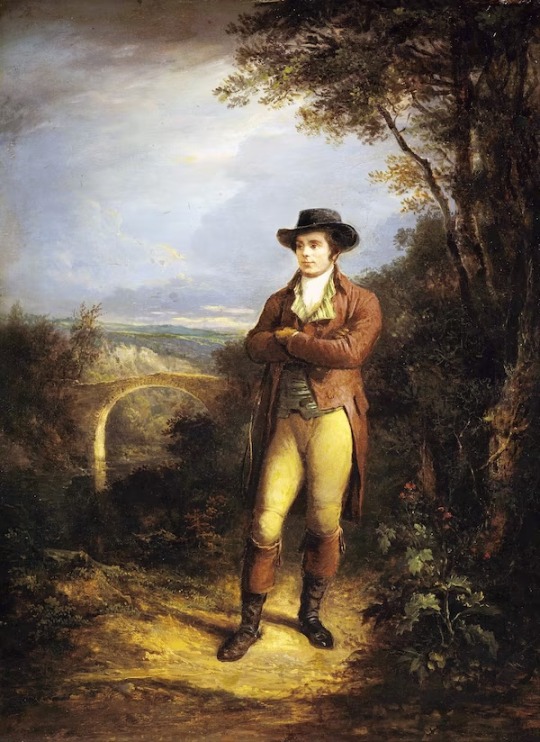
An Oil Painting of Robert Burns in nature. Robert Burns is considered the National Poet of Scotland 🏴 for his work in the 18th century that celebrated Scottish Cultural Heritage. Photograph By Pictures From History, Getty Images
Although Burns’ version is the one that we know today, there were earlier versions of the poem, including Allan Ramsay’s from 1724. Burns explained his version was indeed inspired by another. As he claimed to music publisher George Thomson in September 1793, “I took it down from an old man’s singing.”
Burns was not satisfied with his version of the poem’s original tune, dismissing it as “mediocre.” So between 1799 and 1801, Thomson found and fine-tuned a different melody for the song. It’s the one we still sing today.
A Song For The Year’s End
Burns’ song soon found a home in an annual Scottish tradition: Hogmanay. A blend of Norse and Gaelic customs, the holiday celebrates the last day of the year.
For centuries, Hogmanay, not Christmas, reigned as the biggest winter holiday in Scotland. After all, the Church of Scotland, the country’s official church, had banned the celebration of Christmas in 1640, since it felt the holiday was not Protestant enough.
Unable to make merry at Christmastime, people embraced Hogmanay instead. During Hogmanay, Scottish men, women, and children exchanged gifts and visited friends and neighbors to welcome the new year.
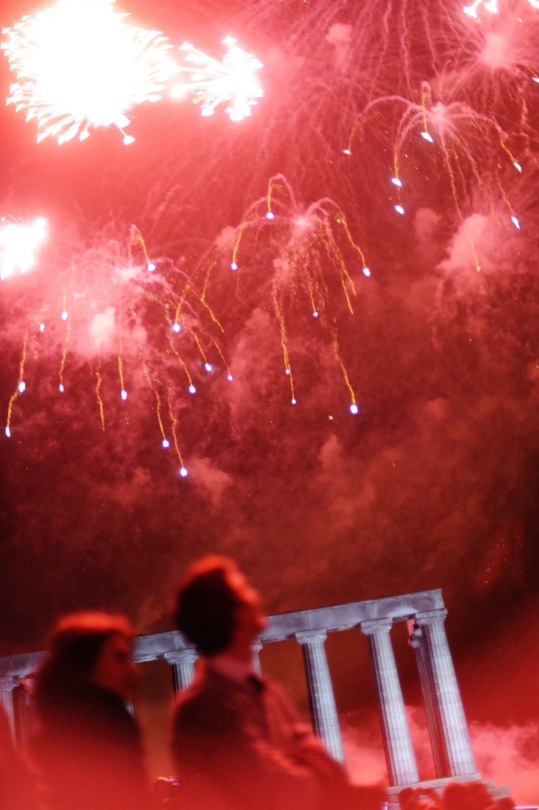

Left: People in Edinburgh watch fireworks during New Year festivities. The New Year festival of Hogmanay became an especially important one in the Scottish calendar after the Church of Scotland banned Christmas in 1640. (The ban was lifted four centuries later.) Photograph By Crofts Simon, Anzenberger/Redux
Right: To welcome the arrival of 2006, the Hogmanay Celebration in Edinburgh attracted more 15,000 people and included a torchlight procession. Photograph By Marco Secchi, Camera Press/Redux
Another Hogmanay tradition? Singing. Some songs—such as “A Guid New Year to ane a’ A’”—were widely recognized. Others were created by families or local communities.
With its emphasis on friendship, reminiscence, and parting, Burns’ “Auld Lang Syne” expressed the essence of Hogmanay: bidding adieu to one year so another could begin.
A New Year’s Tradition
As Scotspeople emigrated in the 19th century, they brought their Hogmanay traditions with them around the world—including “Auld Lang Syne.”
The song soon became a fixture in New Year’s Eve celebrations in the United States. Jazz band Guy Lombardo and His Royal Canadians played it during a New Year’s Eve radio broadcast in 1929. It was a hit—and “Auld Lang Syne” remained a midnight staple of the band’s annual New Year’s Eve show, which aired on radio and eventually television every year until 1976. The show’s success popularized “Auld Lang Syne” as the quintessential New Year’s song across the country.

Guy Lombardo, center, poses with the Royal Canadians orchestra. The jazz band first popularized "Auld Lang Syne" on New Year's Eve in 1929 during their radio broadcast. Photograph By CBS, Getty Images
As Life reported on December 17, 1965, “Should [Lombardo] and his Royal Canadians fail to play ‘Auld Lang Syne’ at midnight on New Year’s Eve […], a deep uneasiness would run through a large segment of the American populace—a conviction that, despite the evidence on every calendar, the new year had not really arrived.”
However, musicologist M.J. Grant emphasizes in her book Auld Lang Syne: A Song and Its Culture that at the time the song “was already firmly established in many communities, quite possibly beginning in the Scottish diaspora.”
So the tradition of playing “Auld Lang Syne” on New Year’s may have not started with Lombardo, but his band ushered in a new beginning for a song that honors the past while welcoming the dawn of a new day.
#New Year’s Eve#A Scottish Poem#Auld Lang Syne#A New Year’s Tradition#Iconic Song | Scotland 🏴#18th Century Poet Robert Burns#Scottish Diaspora#Scottish Cultural Heritage#Robert Burns | National Poet of Scotland 🏴
0 notes
Link
http://www.thefurrowcollective.co.uk/
https://www.facebook.com/thefurrowcollective
https://thefurrowcollective.bandcamp.com/
https://open.spotify.com/album/6oBMvV3LhfUwLQ7WZCvF2v
1 note
·
View note
Photo
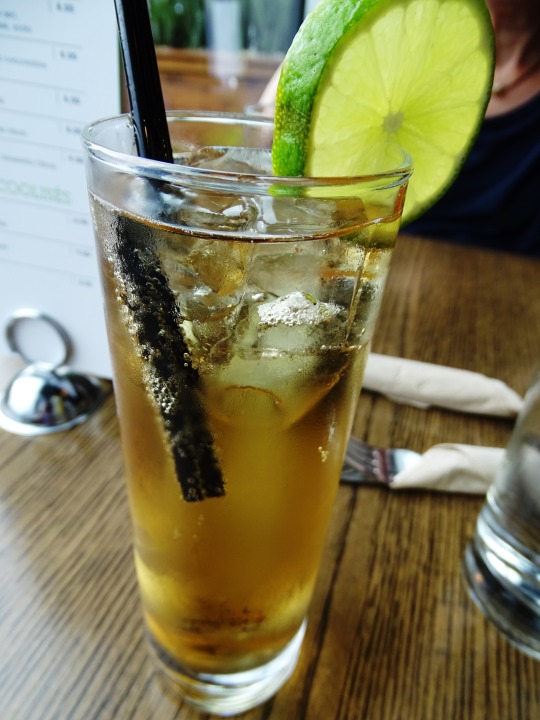

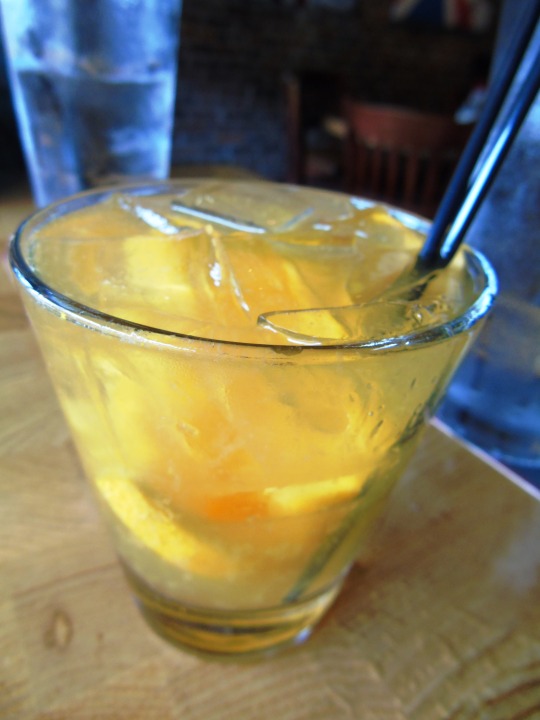


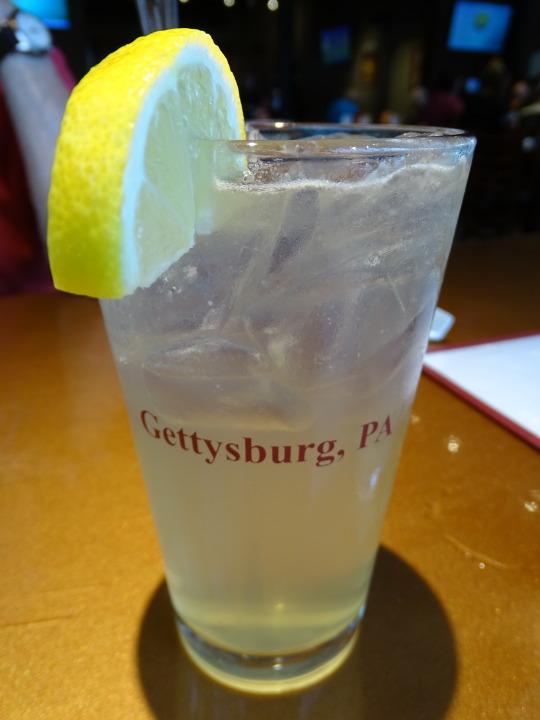
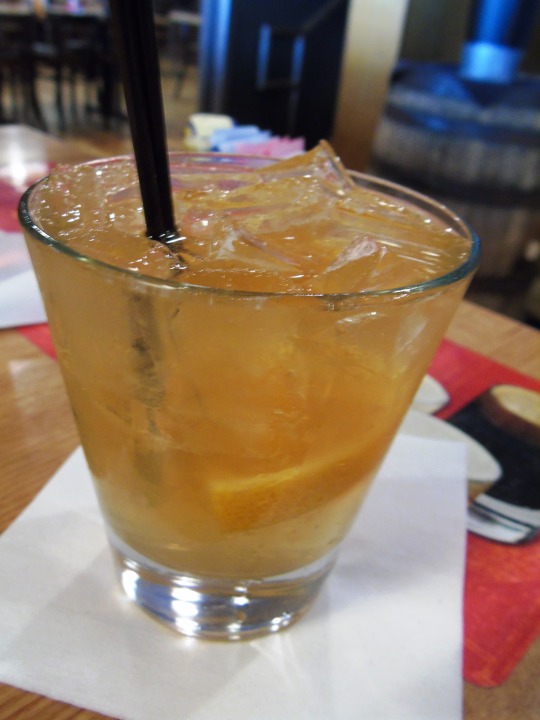
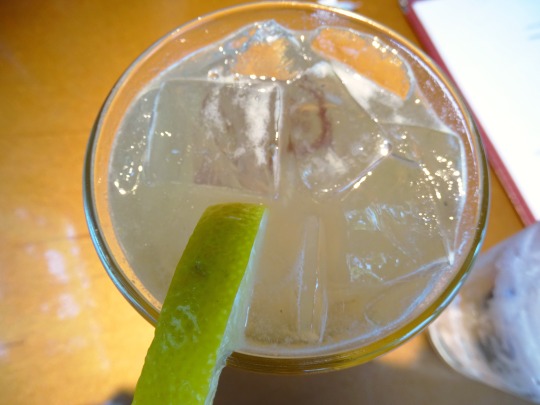

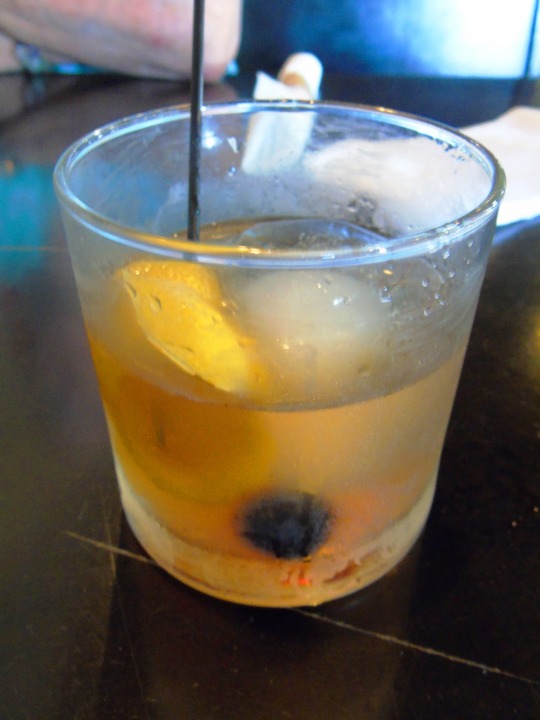
World Whisky Day
Mix up a whisky sour, or pour your favorite whisky over some ice and enjoy. Gather some friends together to try out different brands and cocktails.
If you’re friends with Jack and Jim and spend your weekends with Jameson and Johnnie, then World Whisky Day is going to hold a special significance for you.
Whisky is one of the iconic drinks of true lovers of alcohol and is the foundation of some of the most wonderful drinks known to man. But honestly, who needs an excuse to imbibe in these wonderful libations? If you need one, World Whisky Day is it!
History of World Whisky Day
One of the most common forms of whisky that is sought after is Irish Whisky, and perhaps appropriately so. The origins of the word Whisky can be found in the Gaelic Language.
Uisce Beatha was the original name of whiskey in classical Gaelic, which ultimately became Uisce Beatha in Ireland and Uisge Beatha in Scotland. Both of these names mean “Water of Life” and tells us just how important and vital this particular distillation was to the Gaels.
It was later shortened to just Uisce/Uisge, and then anglicized to Whisky. So now you know, when someone is concerned about your whisky consumption, you can just tell them you’re drinking the water of life!
So what, exactly, is whisky? Whisky is what happens when you create take rich flavorful grains and ferment them into a mash, and then take that mash and distil it down into a pure delicious spirit.
Distillation takes place in a still, a device whose whole purpose is the purification of the alcohol from the fermented mash. One of the most important secrets of distillation is that it must take place in a copper (Or copper lined) still, as the copper removes the sulfur from the drink that would make this otherwise diving beverage decidedly unpleasant to drink.
Astonishing facts about whisky
You may enjoy a delicious glass of whisky, but did you know the following…?
Let’s start with a worrying fact, which is that whisky could have been banned. If it was not because of a medical loophole in the Prohibition period, this drink would have been banned altogether. However, because there was a law that enabled doctors to prescribe whisky as medicine, it survived.
The word whisky actually means ‘water of life.’ this is because it comes from a Gaelic word that reads ‘uisge beathe.’
There are some expensive bottles of whisky around the world. However, the most expensive is the Macallan ‘M’ whisky. This Lalique decanter of whisky was auctioned in Hong Kong for £393,109. The luxury decanter features six liters of whisky, which was drawn from casks made of Spanish oak sherry, dating from the ‘40s until the ‘90s.
The oldest whisky is more than 150-years-old. The Guinness World Record for the World’s Oldest Whisky currently goes to a bottle of 400ml Glenavon Special Liqueur Whisky. It was owned by a family from Ireland. However, it fetched an incredible £14,850 at auction when it was sold to Bonhams in London. It is believed to have been packaged sometime between the years of 1851 and 1858.
The spelling of whisky is interesting. You may have seen it written as whiskey. The version without the ‘e’ is used for Canadian and Scottish whisky. However, for other types of the drink, you opt for the whiskey spelling.
Last but not least, whisky starts life as a beer! This is because it is made with wort, which is a form of beer that gets distilled. In fact, the wort is created using all of the ingredients that yare enjoyed in a pint of delicious beer, i.e. malts, yeast, and water.
How To Celebrate World Whisky Day
World Whisky Day reminds us that there is an incredibly broad range of whisky out there to try, and its unlikely that we’ve managed to try all of it. Whisky can be made from barley, corn, rye, and wheat, just to name a few, and those grains are often mixed in different proportions before fermenting and distilling.
The results are then aged in casks, with both the cask and the time inside changing the flavor. Needless to say, you may need more than one day to sample every kind available to you! World Whisky Day is a great opportunity for you to expand your palette, and share your experiences with your friends.
Source
#Kentucky Crush Lemonade#Whiskey Gingembre#Jack's Dundee Tea#USA#Canada#Whiskey Ginger Mash#Ginger Whisky Smash#Odd Couple#travel#World Whisky Day#restaurant#WorldWhiskyDay#third Saturday in May#original photography#20 May 2023#close up#drinking straw#ice cube#lemon#don't drink and drive#cocktail#international day#whiskey#whisky
1 note
·
View note
Text
Serpent Day 🐍 and Imbolc Facts
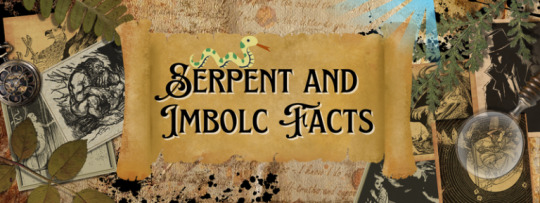
According to Days of the Year, today is Serpent Day, which aims to raise knowledge on serpents; including their place in history, and it's current cultural influence around the world. This is particularly good timing for Celtic folklore, since there is serpent lore directly related to today.
To start, this is going to take some background details on the Celtic signifigence of the festival which (now) takes place on Feburary 1st.
Imbolc was one of the four main Celtic seasonal festivals, and just like Samhain/Halloween, it is a cross-quarter day(approximately halfway between a solstice and equinox).
"Four days on the Celtic calendar were occasions for mainline festivals: Samain (November), Imbolc (February), Beltaine (May), and Lughnasa (August)."
A Dictionary of Celtic Mythology
Because of this importance, many ancient monuments(such as the Hill of Tara) were approximately aligned with their openings faced towards the sunrise of those days.
The time itself was a festival dedicated women, fertility, and milk, and is heavily associated with two different women, both named Brigid.
The first Brigid is the oldest, and is a pre-Christian goddess of fire, blacksmithing, fertility, cattle, crops, and poetry.
It is even thought by some that the traditions of the North American Groundhog Day (February second) may actually come from a Manx superstition for the day.

The second Brigid is the one Bride's Day currently celebrates, and that is St. Brigid. In Kildare (Irish) lore, she started as a slave, but through a good heart and miracles, she eventually found a path that lead her to founding a convent and a monastery.
Perhaps as a form of syncretism, St. Brigid was declared the saint of many things...including blacksmithing, livestock, dairy production, and poetry. Many aspects of the goddess Brigid, including some stories, became associated instead with the Saint.
All of those are the trails that lead to modern day St Bride's Day, which replaced Imbolc and only focused on St. Brigid.
"On "Bride's Day", the first day of the Gaelic Spring, offerings were made to earth and sea. Milk was poured on the ground, and the fisher people made porridge and threw it into the sea so that the sea might yield what was sought from it—lots of fish, and also seaweed for fertilizing the soil. "
"Wonder Tales from Scottish Myth and Legend" By Donald A MacKenzie (1917)
Backstory finished, on to the serpent lore I promised.
On St. Bride's Day, "the serpent" is supposed to emerge. This is showcased in a hymn associated for the day.
“Early on Bride's morn, The serpent shall come ft-om the hole, I will not molest the serpent, Nor will the serpent molest me." "Carmina Gadelica:"
Vol 1, p. 169 by Alexander Carmicheal, (1900)
There is a similar but slightly different version in "Wonder Tales from Scottish Myth and Legend" By Donald A MacKenzie (1917).
"Another sacred animal was the serpent. All winter long it slept secure from storms and cold. When, however, Beira, the winter goddess, was overthrown, and Bride, the goddess of growth, began her reign, the serpent came forth from its winter abode. The people then chanted a hymn, of which the following is a verse:-
To-day is the Day of Bride,
The serpent shall come from his hole,
I will not molest the serpent,
And the serpent will not molest me.
The serpent was sometimes called "Daughter of Ivor", and MacIvors were supposed to be safe from attack by her and all other serpents. She was also referred to as "noble queen". It is possible she was a form of the Earth spirit in spring-time."
Wonder Tales from Scottish Myth and Legend" By Donald A MacKenzie (1917)
MacKenzie also mentioned that a white serpent was supposed to give skill to physicians. All it took was cooking a specific part of the body, and the first person who tasted it would obtain the healing powers.
1 note
·
View note
Text
@imlikeamericangraffiti tagged me to answer these 15 questions- thank you so much!! 🥰
1. are you named after anyone?
my birthname is the gaelic version of my scottish granny’s name! my chosen name is technically derivative of it, if quite distantly
2. when is the last time you cried?
tuesday in a seminar cuz it was my first time out in a while + my knee was Not happy to be forced into action again, i had to leave early
3. do you have any kids?
i am indeed a father but i kind of lost track of how many kids i’m meant to have adopted, one of mine kept adopting more kids for me. i mostly have a son and he’s the best in the entire world
4. do you use sarcasm?
if its use is warranted
5. what is the first thing you notice about people?
i think it’s kindness? i think you can tell fairly soon into an interaction how important it is for someone + that’s usually what decides how much i’m going to like someone. other than that it’s Eye Crinkles (which has not failed me yet, see: my girlfriend)
6. what colour are your eyes?
hazel brown?
7. scary movies or happy endings?
i used to be Massive on scary movies - october 2017 i watched a different one every single day - but now i’m more about rewatching things for the catharsis 😌
8. special talents?
i guess mostly just music? i’m never going to be mindblowing at any specific instrument cuz i struggle to commit enough to one thing for that. but music has always come pretty naturally to me!
9. where were you born?
london!
10. what are your hobbies?
i started fingerknitting a couple days ago! spent yesterday almost making a hat :) i kind of cycle through selflearning various physical crafts - ive done bookbinding and sewing and i try to draw whenever i can!
11. do you have any pets?
alas no :( when i was 17 tho my brother promised to get me a giant land snail for my 21st birthday. here’s hoping he makes good on that
12. what sports do/have you play/ed?
i used to do local competitive swimming and run 5k every week! now i don’t get any further than just walking a lot
13. how tall are you?
5’6” so i do believe dead on average?
14. favourite school subject?
i think it was usually a tie between english literature or music? but i also genuinely used to quite enjoy maths before the workload became ridiculous at a level
15. dream job?
just to work in a oddities/second hand bookshop. previously wouldve said musician but i honestly just want things to be simple + comfy now
i am going to tag @longhornedcowfish @oceanmoss @martingore101 and uh. i’m not actually sure who else rn. + whoever may be interested, all without any obligations!
1 note
·
View note
Text

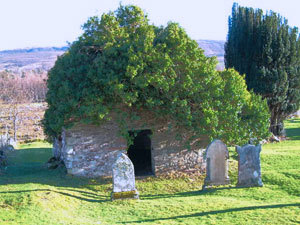

January 3rd the year 671 saw the birth in Ireland of Saint Maelrubha, a monk who founded a monastery at what is now Applecross.
On his father's side Maelrubha was eighth in descent from the famous Niall of the Nine Hostages, King of Ireland, and through his mother he belonged to the kindred of St Congal of Bangor. He was born on 3rd January 642 AD, probably in the south-east part of what is now Londonderry.
After residing for some time in the monastery at Bangor, he embarked for Scotland in 671 AD. His early missionary enterprises were concentrated in districts now included in Argyll, planting churches at Kilarrow in Islay, and on the mainland at Killarow in the modern Killean and Kilchenzie parish; Kilmory, now Strathlachlan parish; and Kilmorrie near Dunstaffnage Castle.
In 673AD St Maelrubha arrived at Apercrossan, now Applecross, in Ross-shire, and made it the nucleus of his Christian missionary work throughout that part of the west coast and eastwards as far as the shores of the North Sea. He continued to be the abb of the muinntir for an incredible fifty-one years and died on 21st April 722AD. The privileged ground around the monastery, its garth or sanctuary, extended six miles in all directions and came to be known in the Gaelic as A'Chomraich, i.e. the sanctuary, a name still applied in the Highlands to the present parish of Applecross.
Not surprisingly, Maelrubha was considered to be, "the patron of all the coast, from Applecross to Loch Broom." Traditions in the Black Isle tell us that St Maelrubha was martyred in the parish of Urquhart and that his body was carried back to Applecross for interment.
According to another tradition, he was killed by Scandinavian pirates in Strathnaver in Sutherland, and was buried at a spot close to the river Naver, about nine miles from its mouth. It is said that the spot was marked by a rough stone bearing an incised cross.
You have to make your choices in these matters but personally, I favour the Strathnaver version of the story. The churches of Forres in Moray and Fordyce in Banffshire were dedicated to St Laurence and St Talarican respectively but, since there was, in each of these parishes, a fair - known as Samareve's in the former,and New Summaruff's in the latter - the reader might conclude that there must have been some dedication to St Maelrubha in both parishes. There was also a Samarive's Fair in the parish of Keith, whose church was under the invocation of Maelrubha, giving the township its ancient name of 'Kethmalruf'. These are possible exaamples of old "Celtic dedications" being supplanted with new dedications which were more acceptable to the medieval Church as it became more Roman in its outlook.
The community at Applecross played a major rôle in the advent of Christianity in the north and north-west of Scotland. It acted, in those parts, in the same way that Iona did in Dalriada and the western isles. It is not surprising to find that its influence spread as far as the north east.
Pics are of thev 15th century ruined chapel at Applecross and St Maelrubha's Scottish Episcopal Church, Poolewe.
15 notes
·
View notes